Key Takeaways
1. Context is King: Out-Think the Problem
Nothing exists in limbo. Everything exists in context.
Change the game. Most problems aren't solved by attacking them head-on, but by shifting the context in which they exist. Instead of trying to solve a problem directly, look for ways to change the situation so that the problem becomes easier to solve or even disappears. This is about getting upstream and changing the rules of the game.
Break it down. Complex problems can be overwhelming, but they can be made manageable by breaking them down into smaller, more solvable pieces. Identify the pressure point, the one piece that, when changed, will have a ripple effect on the entire system. This is about finding the leverage point.
- Henry Ford's quote: "There’s no problem that can’t be solved if you break it down into small enough pieces."
- Find the piece that changes everything else.
Beyond textbooks. True learning comes from experience and stories, not from dry formulas and rules. Principles endure, while formulas don't. The most powerful lessons are those you work out for yourself, not those you memorize. This is about active learning.
2. Creativity is Action, Not Just Ideas
Creativity is creating something out of nothing.
Ideas are not enough. Creativity isn't just about having a good idea; it's about making that idea a reality. It's about shaping matter to fit the concept. The real creativity lies in the dogged determination to do whatever it takes to bring an idea to life.
- The story of the old lady who dug a pit for her abusive husband.
- The difference between having an idea and making it happen.
Mind shapes matter. Concepts don't exist until we create them in our minds. Then, we shape matter to fit the concept. Without a mind to envision a ship, to build a ship, to use it as a ship, there isn't a ship. This is about the power of the human mind.
- The Ship of Theseus thought experiment.
- The concept of a ship needs a mind to exist.
Simplicity is key. The most creative solutions are often the simplest. Understatement and letting imagination do the rest can be more powerful than complex actions. This is about the power of less.
- The ex-student who left colored squares on the CEO's floor.
- Letting imagination do the rest.
3. Embrace Ignorance: Question Everything
The wise man knows he doesn’t know. The fool doesn’t know he doesn’t know.
The power of "I don't know." Instead of defending what we think we know, we should embrace what we don't know. Saying "I don't know" opens up the way to new possibilities and discoveries. This is about intellectual humility.
- Lao Tzu's quote: "The wise man knows he doesn’t know. The fool doesn’t know he doesn’t know."
- It's more powerful to say "I don't know" than to have an immediate opinion.
Experience is a filter. We interpret everything through the lens of our own experience. What we know is all there is to know, until we learn something new. This is about the limitations of our own perspective.
- The story of Stanley Pollitt and the sheep.
- We interpret situations using our own experience.
Childlike curiosity. A child's mind works the same way as an adult's mind. We think what we know is all there is to know. We should embrace the childlike curiosity that allows us to question everything. This is about the power of an enquiring mind.
- The story of the son and the phone bill.
- At four years old, you don't even know the world of paying for things exists.
4. Life is a Zero-Sum Game: Choose Your Role
Marketing, like war, is a zero-sum game. If you want something you have to take it from someone else.
Predator or prey. In a zero-sum game, for someone to win, someone has to lose. You must choose whether you want to be the predator or the prey. If you don't choose, the choice will be made for you. This is about taking responsibility.
- Adam Morgan's description: "like a knife-fight in a phone box."
- There isn't any place for bystanders.
Hard choices. There are two kinds of liberties: the freedom to do things and the freedom from things. The more you have of one, the less you have of the other. No one wants to face these hard choices. This is about trade-offs.
- Isaiah Berlin's two kinds of liberties.
- If you want more of one, you have to have less of the other.
Single-minded propositions. You can't have more than 100%. Adding more to a message doesn't make it stronger; it dilutes it. Propositions should be single-minded to concentrate the message. This is about focus.
- The story of the Twiglets and strawberry ice cream.
- More is less.
5. Advertising's Real Battle: Getting Noticed
The real issue isn’t, is our advertising saying the right things? The real issue is, how do we even get noticed?
Civilians, not policemen. Consumers are not trained to notice every detail of every ad. They are sleepwalking civilians, filtering out distractions. We must treat them as such, not as if they were all trained policemen. This is about understanding the audience.
- The police inspector's lesson about observation.
- People don't notice what's going on around them.
The invisible majority. Most advertising is invisible. The vast majority of ads are not noticed or remembered. The real question isn't whether the ad is right, but whether anyone will even notice it. This is about cutting through the noise.
- 89% of ads are not noticed or remembered.
- The worrying number is the 89%.
"What's in it for me?" Everything is an advertising problem. To get someone to do or think what you want, you must answer the question, "What's in it for them?" This is about understanding motivation.
- The story of the Young Creative Council workshop.
- How can you make me want what you want?
6. Believability Trumps Truth: Know Your Audience
A simple lie is often more powerful than a complicated truth. At least when it comes to mass communication.
The power of belief. It doesn't matter if something is true; what matters is whether the target market wants to believe it. Something that captures the imagination is more powerful than something that captures reason. This is about emotional connection.
- The story of Group Captain John Cunningham and the carrots.
- It didn't matter that it wasn't true.
Forget clever. We are often too clever for our own good. We create solutions that make sense to intelligent people like us, but most people aren't like us. We need to penetrate their world, not our own. This is about empathy.
- Margaret Thatcher's appeal to housewives.
- We need to forget about what works for us.
Trust is the brand. Building a brand is about building trust. It's about showing, not just telling. It's about being honest and reliable. This is about long-term relationships.
- The story of the plumber who didn't charge for a small fix.
- He invalidated all the competition for a much bigger job, without even a pitch.
7. Less is More: Focus on the Essential
It doesn’t matter what went into it. What matters is what people get out of it.
Quality over quantity. We often focus on how much time or effort we put into something, but what really matters is the quality of the result. We should judge on quality, not quantity. This is about value.
- The story of George and the big books.
- Counting has taken over from what counts.
The consumer's telescope. Clients look at the world through the lens of their brand, but consumers see it from a different perspective. We must understand the consumer's world to be effective. This is about perspective.
- The story of the teabags.
- We can't assume everyone knows what we know.
One-to-one communication. Even in mass media, we are only ever talking to one person at a time. We must reach people in their immediate consciousness. This is about intimacy.
- The story of the plane crash in New York.
- You're only ever talking to one person.
8. Rejection is a Speed Bump: Keep Asking
If you don’t ask, you don’t get.
Fear of rejection. Most of us are afraid to ask for what we want because we fear rejection. But rejection isn't death; it's just a speed bump. If you avoid rejection, you avoid opportunity. This is about courage.
- The story of Farmer Jones and the plough.
- We react to situations that haven't happened yet.
The numbers game. Rejection is part of the creative process. You have to do a lot of work to get a few good results. If you want more good ads, you have to write more ads. This is about persistence.
- The numbers of ads needed to get a good one to run.
- If you want 2 good ads to run, write 32 ads.
Criticism is growth. Criticism isn't always negative; it can be a chance to grow. Praise won't help you grow; it tells you, "You're doing it right, don't change." This is about learning.
- Randy Pausch's lesson from his football coach.
- Criticism can be a chance to grow.
9. Learn from Losing: Criticism is Growth
One sometimes learns more from a lost race than a victory.
Criticism is a gift. Criticism is often more useful than praise. It's a chance to learn and grow. We should define ourselves by how open we are to learning and growing. This is about self-improvement.
- Enzo Ferrari's quote about lost races.
- Criticism is often more useful than praise.
Let go of the past. Holding on to past injustices only hurts you. It takes your attention off the present and the future. Revenge is like drinking poison and waiting for your enemy to die. This is about moving forward.
- Gandhi's quote about revenge.
- You only actually hurt yourself.
Prove them wrong. Use criticism as motivation to prove your doubters wrong. Don't let others define your potential. This is about self-belief.
- The story of Tim Martin and his teacher, Wetherspoon.
- Tim Martin grew up wanting to prove him wrong.
10. Form Follows Function: Design for Purpose
Form follows function.
Function first. The form of something should follow its function. Get the brief for the function right in the first place, then the form will come out of it. Don't change the form to suit a different function. This is about purpose.
- The story of the sawn-off shotgun.
- Don't change the form to suit a different function.
Connected minds. Great ideas come from collaboration and discussion, not from isolated moments of inspiration. Chance favors the connected mind. This is about teamwork.
- The story of the car-parts incubator.
- Ideas usually aren't 'Eureka' moments.
The big picture. We must see the big picture, not just our own area of expertise. We must understand how all the pieces fit together. This is about systems thinking.
- The story of the missing radios.
- Specialists who can't see the bigger picture.
11. The Human Mind is the Medium: Connect Deeply
The only medium that doesn’t change is people.
Wrong brief, wrong solution. You can't get the right solution if you've got the wrong brief. Question the brief. If the answer doesn't work, maybe the brief is wrong. This is about problem-solving.
- The story of the Panama Canal.
- The French hadn't questioned the brief.
Effectiveness over efficiency. It's more important to do the right things than to do things right. Focus on effectiveness, not just efficiency. This is about priorities.
- The story of the man under the steamroller.
- Efficiency is doing things right. Effectiveness is doing the right things.
Imagination is key. The human mind is our medium. We must tap into the power of imagination to create truly great work. This is about creativity.
- The story of the horror movie sound effects.
- Imagination is more important than knowledge.
12. The Journey is the Destination: Value the Process
The journey is the destination.
The power of the process. Life is about the journey, not just the destination. We should value the process, not just the result. This is about being present.
- The story of Mick Dean and the pilgrimage.
- He wanted it to be about the journey, the part that actually existed.
Logic is a superstition. We often rely too much on logic and reason. We should be open to other ways of thinking. This is about challenging assumptions.
- The story of the washing up.
- Logic is our superstition.
The team is the key. The best creative directors build teams that can do great work without them. They focus on enabling others, not just doing it themselves. This is about leadership.
- Kenny Dalglish's advice about being a manager.
- You'll know you've got the team right when you can't get on it.
Last updated:
FAQ
What's "Predatory Thinking: A Masterclass in Out-Thinking the Competition" about?
- Overview of the book: "Predatory Thinking" by Dave Trott is a guide on how to out-think the competition in business and life. It emphasizes the importance of context and creative problem-solving.
- Core concept: The book introduces the idea of "predatory thinking," which involves changing the context of a problem to find a solution.
- Structure: The book is divided into ten parts, each focusing on different aspects of creativity and strategic thinking, illustrated through stories and examples.
Why should I read "Predatory Thinking"?
- Practical insights: The book offers practical advice on how to approach problems creatively and strategically, making it valuable for anyone in business or creative fields.
- Engaging storytelling: Dave Trott uses engaging stories to illustrate his points, making complex concepts accessible and memorable.
- Broad applicability: The principles of predatory thinking can be applied to various aspects of life, not just business, making it a versatile read.
What are the key takeaways of "Predatory Thinking"?
- Context is crucial: Understanding the context of a problem is essential for finding effective solutions.
- Creativity is a process: Creativity involves breaking down problems into smaller parts and finding the pressure points that can change everything.
- Learning through stories: The book emphasizes learning through stories and experiences rather than rigid formulas or rules.
How does Dave Trott define "predatory thinking"?
- Out-thinking the problem: Predatory thinking involves changing the context of a problem to make it solvable.
- Breaking down problems: It requires breaking down problems into smaller, manageable pieces to identify the key pressure points.
- Creative problem-solving: The approach encourages creative and strategic thinking to outmaneuver competition.
What is the significance of the title "Predatory Thinking"?
- Predatory mindset: The title suggests a mindset that is proactive, strategic, and focused on out-thinking competitors.
- Competitive edge: It implies using creativity and strategic thinking to gain a competitive advantage in business and life.
- Metaphorical approach: The term "predatory" is metaphorical, emphasizing the need to be sharp and strategic rather than aggressive.
What are some of the best quotes from "Predatory Thinking" and what do they mean?
- "Principles endure, formulas don’t": This quote emphasizes the importance of understanding underlying principles rather than relying on rigid formulas.
- "Creativity is creating something out of nothing": It highlights the essence of creativity as the ability to bring new ideas into existence.
- "The journey is the destination": This suggests that the process of learning and growing is more important than the end result.
How does Dave Trott illustrate the concept of "form follows function"?
- Design principle: "Form follows function" is a design principle that suggests the shape of an object should be primarily based on its intended function.
- Practical application: Trott uses examples to show how understanding the function of a product or idea leads to more effective design and solutions.
- Avoiding misalignment: The concept warns against adapting solutions to fit a function they weren't intended for, which can lead to ineffective outcomes.
What role does storytelling play in "Predatory Thinking"?
- Learning through stories: Trott uses storytelling as a method to convey complex ideas in an engaging and memorable way.
- Illustrative examples: Stories provide real-world examples that illustrate the principles of predatory thinking.
- Emotional connection: Storytelling helps readers connect emotionally with the concepts, making them more relatable and easier to understand.
How does "Predatory Thinking" address the concept of "less is more"?
- Simplicity in solutions: The book advocates for simplicity in problem-solving, suggesting that less complexity often leads to more effective solutions.
- Focus on essentials: It encourages focusing on the most important aspects of a problem rather than getting bogged down in details.
- Single-minded propositions: Trott emphasizes the importance of having a clear, single-minded proposition in communication and advertising.
What is the relationship between creativity and context in "Predatory Thinking"?
- Contextual awareness: Understanding the context of a problem is crucial for creative problem-solving.
- Adapting solutions: Creativity involves adapting solutions to fit the specific context, rather than applying generic formulas.
- Changing perspectives: By changing the context, one can often find new and innovative solutions to problems.
How does Dave Trott view the role of failure in learning?
- Learning from criticism: Trott suggests that criticism and failure are opportunities for growth and learning.
- Embracing mistakes: He encourages embracing mistakes as part of the creative process, rather than fearing them.
- Continuous improvement: The book promotes a mindset of continuous improvement through learning from failures and setbacks.
What is the significance of the epilogue "Learning isn’t the same as being taught"?
- Active learning: The epilogue emphasizes the importance of active learning through experience and experimentation.
- Beyond formal education: It suggests that true learning comes from questioning and exploring, rather than just following formal education.
- Entrepreneurial mindset: The book encourages an entrepreneurial mindset that values creativity and problem-solving over rote learning.
Review Summary
Predatory Thinking receives mostly positive reviews, with readers praising its entertaining stories and valuable insights for creative thinking. Many find it applicable beyond advertising, offering lessons for problem-solving and business. The book's short, digestible chapters are appreciated, though some find the content basic or repetitive. Readers highlight the author's storytelling ability and unconventional examples. While some criticize its marketing focus, others appreciate its practical wisdom and thought-provoking ideas. Overall, it's considered a quick, inspiring read for those in creative fields.
Similar Books

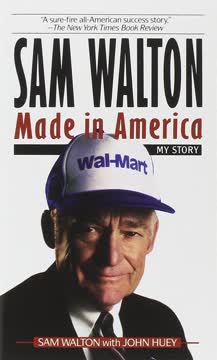
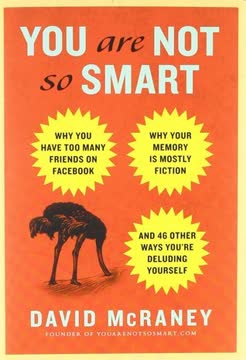

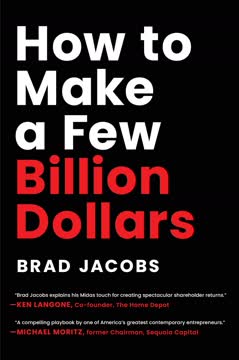
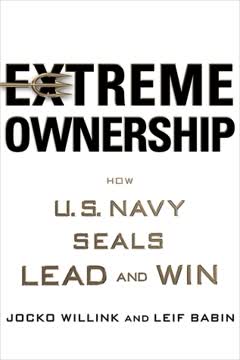
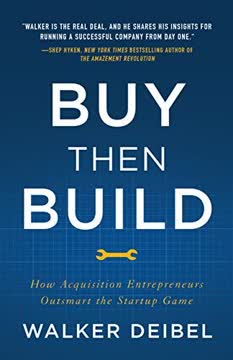


Download PDF
Download EPUB
.epub digital book format is ideal for reading ebooks on phones, tablets, and e-readers.






